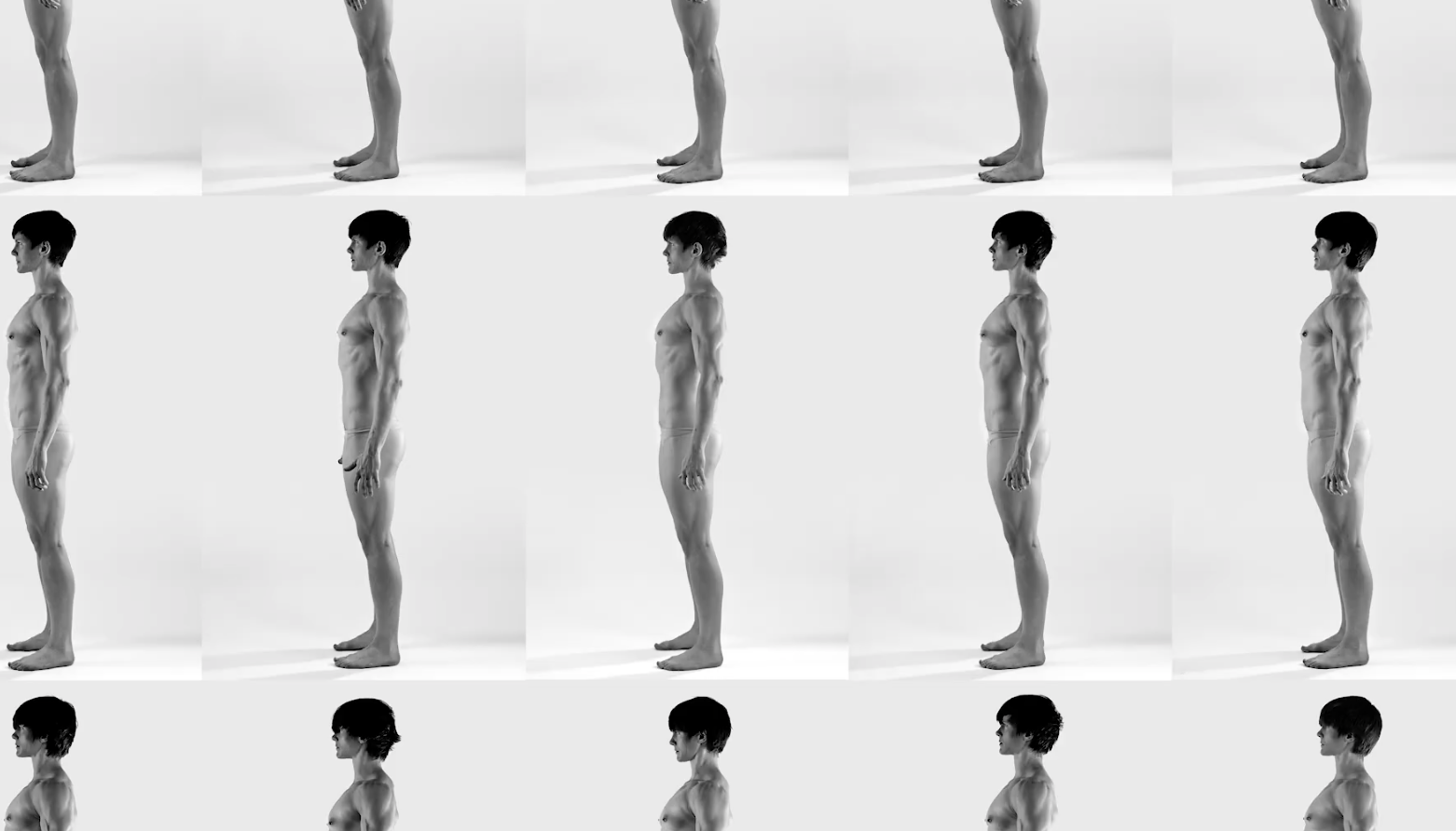Cassils, a trans multimedia and performance artist, woke up one day to dozens of heartfelt messages from queer people all over the UK making the journey to see their new exhibition. Located at HOME, an art gallery in Manchester, the exhibition provides a survey of their work over the last 10 years. The climax is a new work, Human Measure, which epitomizes their artistic approach—using the body itself as a means of expression.
Human Measure is their first dance performance piece, made in collaboration with Jasmine Albuquerque who has choreographed for musicians like St. Vincent and Devendra Banhart. Cassils is joined by five other nonbinary dancers, all mostly nude. As their bodies entwine, photo flashes create sudden, still exposures of the figures in sensual poses. This culminates in the dancers positioning themselves on the giant canvas beneath them, which is then washed in water, and the resulting cyanotype negative is hoisted up, containing a lasting impression of the dancers’ bodies.
According to a profile by The New York Times, Human Measure is the result of Cassils “finding a formal language about what it means to be trans and nonbinary.” That language speaks through the body, as it does in much of Cassils’ art. The gallery writes that “For Cassils, performance is a form of social sculpture: drawing from the idea that bodies are formed in relation to forces of power and social expectations, their work investigates historical contexts to examine the present moment.”
One notable example included in the exhibition is “Cuts: A Traditional Sculpture” (a reference to a similarly titled work by Eleanor Antin). In this piece, Cassils gained muscle over a 23 week period, documenting their progress with semi-nude, full-length photos of themself in neutral poses. “Bodybuilding is such a cartoon, a hyper-performance of masculinity,” Cassils explained to The New York Times. “I became interested in not necessarily trying to approach this perfect masculinity, but more to play with this false idea of embodiment.”
Cassils’ presentation of the body can range from celebratory to stark to traumatic. Another piece, “Inextinguishable Fire,” has the artist in protective gear setting themself on fire as a reaction to the detached violence propagated by news media at the height of the Iraq War.
Cassils’ exhibition comes at a time when trans and nonbinary representation in the media is increasing. “I really almost think of trans years being like dog years, there’s such an exponential development of vocabulary and understanding in certain circles,” they said. At the same time, they note that this spotlight has resulted in severe political pushback, with “over a hundred [anti-trans] bills that are sitting on the state legislatures.”
Their work seeks to address this, as Human Measure ends with Cassils hoisting the cyanotype canvas of dancers up with the help of a younger trans person. They explain: “We are hoisting this burden of representation together.”
Don't forget to share:
Help make sure LGBTQ+ stories are being told...
We can't rely on mainstream media to tell our stories. That's why we don't lock our articles behind a paywall. Will you support our mission with a contribution today?
Cancel anytime · Proudly LGBTQ+ owned and operated
Read More in Entertainment
The Latest on INTO
Subscribe to get a twice-weekly dose of queer news, updates, and insights from the INTO team.
in Your Inbox













